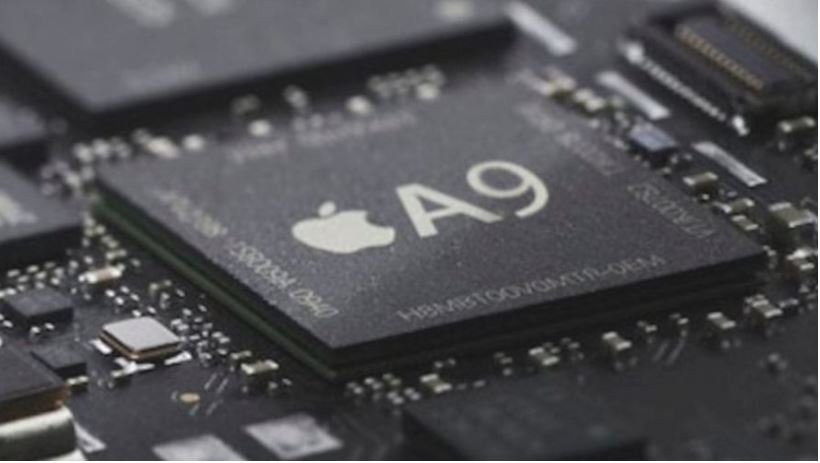

Every modern smartphone is built on the basis of an ARM processor. The first such chipsets consisted of one core and had a minimum clock frequency. The current in their power is not worse than Intel and AMD computer chips. Make sure it helps you evaluate mobile processors.
Now smartphones can process top information when needed. The power of their processor is enough to solve absolutely any problems. At the same time, modern chipsets consume a minimum amount of electricity, for which an improved technical process should be thanked. Our rating processors for smartphones will tell you about the most powerful and interesting models. Devices based on them can be blamed for everything, but certainly not for a lack of power!
Table of Contents
Good to know!
Currently, the following companies are best known on the mobile processor market:
- Qualcomm – produces Snapdragon chipsets.
- Samsung – creates Exynos chips.
- MediaTek – flagship processors distributed under the Helio brand.
- Huawei – chipsets under the HiSilicon brand are embedded mainly in their own smartphones.
- Apple – processors with the same name for their own devices.
It is not possible to determine exactly which chips are stronger and which are weaker. Of course, there are various types of tests and comparative tests. But their result can be called conditional, hypothetical. In practice, each processor runs in its own mode, rarely bringing the clock frequency to its maximum. And yet our assessment can be considered correct – other mobile processors suffer from some shortcomings, and the devices based on them can not be called ideal.
Models may not be presented recently at our summit. We decided to tell only about the novelties on which smartphones are already available on store shelves.
APPLE A12 Bionic
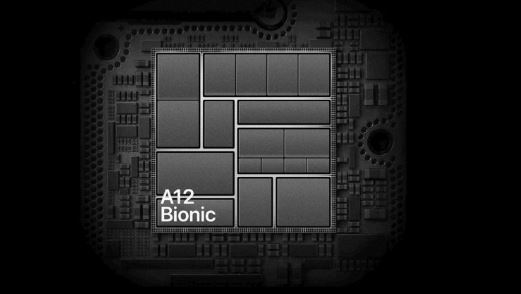
- Release year: 2018
- Technological process: 7 nm
- Architecture : 2 * Monsoon + 4 * Mistral
- Video accelerator: Apple GPU
Geekbench score: 4813/10266 points
The Apple processor, released in 2018, was not only a record holder in terms of points scored, but also the first chipset built in the technology of a 7-nanometer process. It has 2 high-performance cores and 4 energy-saving ones. If we compare it with the previous A11 chipset, the first four consume 50% less energy, and the performance cores are 15% faster and 40% more economical. If we talk about the number of operations, then in a second he is able to handle about 5 trillion tasks, and his older brother A11 only 600 billion. This processor has machine learning functions – it recognizes faces with a hat, glasses and beard, monitors facial expressions to create more accurate emoji and performs many other useful functions.
The chip works in conjunction with the updated 4-core video accelerator, which outperforms its predecessor in terms of performance by 50% and is the most powerful graphics solution for June 2019. An interesting feature of the novelty is open source – this means that developers can use the computing power of machine learning in their applications. In other words, the program will learn. It is mainly used for shooting “Portraits” and in SmartHDR mode. Thanks to the chipset’s capabilities, the user can easily immerse himself in augmented reality on his smartphone and be able to create a 3D photo on the pediment.
Advantages:
- Economical battery consumption.
- Improved FaceID function – the camera recognizes the face with glasses, chin and hat.
- Excellent gaming performance.
- Enhanced Emoji.
- Great results when taking photos.
- The most powerful graphic coprocessor.
Disadvantages:
- It is only used on Apple smartphones and tablets with the highest price segment.
The most popular smartphones: Apple Xr, Xs, Xs Max.
Qualcomm Snapdragon 855
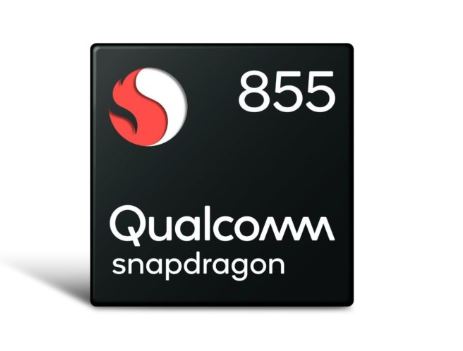
- Release year: 2019
- Technological process: 7 nm
- Architecture : Kryo 485 Gold + 3 * Kryo 485 Gold + 4 * Kryo 485 Silver
- Video accelerator: Adreno 640
Geekbench score: 3540/11150 points
The Apple chipset has become a market leader, but aroused interest only fans of this brand, which is quite expected – it will only be in the company’s devices. The second number in the ranking should be the idea of Qualcomm – Snapdragon 855. Attentive readers have seen that the device has a complex and incomprehensible architecture, and is ahead of the “apple” layout in multi-core mode. The peculiarity of this novelty is that it has 8 cores, but unlike previous Qualcomm chipsets, they are not divided into two quadruples, but work according to the principle: one high-performance core with a frequency of 2.84 GHz for the most complex tasks, three medium cores 2.42 GHz for photos and games, and four energy-saving 1.8 GHz for daily activities.
The numbers speak for themselves, so there is no special sense in the details and the most important features – support for the next generation of 5G networks, the intelligence of the fourth generation machines capable of processing photos and videos on the fly using neural networks, improving images created in bad conditions, new possibilities for AR and VR, as well as support for the new ultrasonic fingerprint scanner, it can not be broken, and can read the finger in difficult conditions (wet, dirty, etc.).
Advantages:
- High performance in 3D games, VR and AR applications
- Play video up to 8K.
- Improved shots in low light conditions.
- Fixing photos in real time – you don’t have to wait for the result.
- Support for a new type of fingerprint.
- Work in networks 5
- Support for new 48 megapixel sensors.
- Audiofocus – now the voice assistant will only hear the owner of the smartphone and will do it even on a busy street.
- Record video in HDR10 + mode with 4K resolution.
- Support for the new Wi-Fi 802.11ay standard – 10 Gb / s.
- Built-in DAC.
Disadvantages:
- Lack.
The most popular smartphones: Xiaomi Mi 9, Samsung S10, OnePlus 7
Samsung Exynos 9820
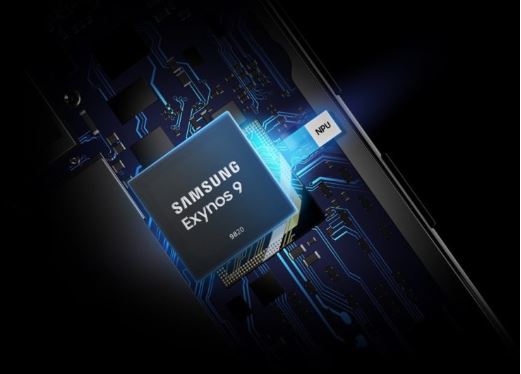
- Release year: 2019
- Technological process: 8 nm
- Architecture : 2 * Custom + 2 * Cortex A75 + 4 * Cortex A55
- Video accelerator : Mali-G76 MP12
Geekbench score: 4382/9570 points
An interesting fact was the appearance of the Samsung chipset in third place among the most powerful processors. Earlier, the company’s solutions in synthetic tests were worse not only from Qualcomm, but also from Huawei, but in this case the data for Koreans proved to be higher.
The new technology is based on 8 nanometers, the cores are divided into 3 groups – two fourth generation cores, two efficient Cortex A75 and four energy-saving Cortex A55. Like other manufacturers, the company focused on improving neural network performance, user data security as well as improving the camera and supporting a large number of sensors. So the novelty can work with 5 cameras, including infrared, for face scanning and a resolution of no more than 22 megapixels or two cameras facing forward with a resolution of 16 megapixels. In addition, the chipset supports 4K displays, shooting at a speed of 8K 30 frames per second, from 4K to 120 frames per second.
Advantages:
- Immediate configuration of camera settings for work with AR and VR.
- Support shooting in 8K.
- Work with 5 cameras.
- Economical battery consumption.
- Improved encryption of users’ personal data.
- Processing 4K video up to 150 frames per second.
- 4K display support.
- Work with UFS 2.1 / 3.0 solid state drives.
Disadvantages:
- The technical process is 8 nm – even with the most optimal optimization, these chipsets cannot compete with 7 nm models in terms of energy efficiency.
- Of the 8 cores, only the first two can be called new, the remaining 6 cores migrated from previous processors without any changes, which means that the new is difficult to fully take into account as such – it is a rather improved old processor.
The most popular smartphones: Samsung S10, S10 +, S10e
Huawei KIRIN 980
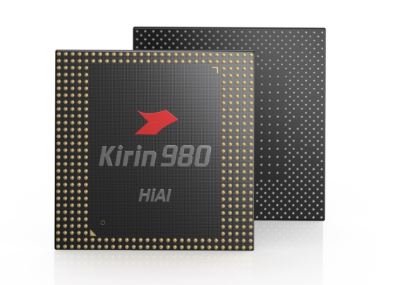
- Release year: 2018
- Technological process: 7 nm
- Architecture : 2 * Cortex-A76 + 2 * Cortex A76 + 4 * Cortex A55
- Video accelerator : Mali-G76 MP10
Geekbench score: 3390/10318 points
The new Huawei processor technically became the first created by 7 nm process technology, however, presenting it to the world, the company was late with the release, giving Apple laurels. The cores are divided into three groups – two high-performance, two energy-efficient and four with medium performance. To use this or that task exactly the cores needed by the company, they implemented Flex-Scheduling technology, thanks to which the efficiency increased by 37% compared to last year’s Kirin 970. Not without a new graphic accelerator, which is not only more efficient, but also automatically increases clock frequency in games.
Like its competitors, Huawei has improved the engine block, it is 120% faster than its predecessor. In this case, it’s not just words. Every year, all manufacturers rely on cameras and the fact that thanks to the work of AI photos are really better in all conditions, it is difficult to question. This is best seen in Huawei. Already last year Kirin 970 the company took first place in the most prestigious DxOMark camera ranking. With the new processor, we can expect to beat the previous bar. Much has been written about the photographic capabilities of the chipset, or rather about its neural block. If simplified, then Huawei proceeds as follows – it does not chase the best indicators in the tests, but makes really great chipsets for photos and videos, while again there will be no problems running games and other tasks.
Advantages:
- The best processor for photos and videos.
- Two neural network modules.
- LPDDR4X fast RAM support up to 16 GB.
- Flex-Scheduling is a technology of “correct” selection of cores for specific tasks, which at the output gives excellent energy efficiency and quick loading of any applications.
- HDR10 + support.
- Support for the new standard – 802.11ay Wi-Fi.
- Work with 48 megapixel cameras or two 22 megapixel modules.
- 4K recording at 60 fps
Disadvantages:
- The graphics coprocessor is weaker than competitors – this is not a minus for users, because there is Turbo GPU technology for automatic overclocking that compensates for the difference.
- The company used and improved the “old” cores, that is, it is an updated processor, not a fundamentally new version.
- No 5G support.
The most popular smartphones: Honor View 20, Huawei P30, Huawei Mate 20
Mediatek Helio P90
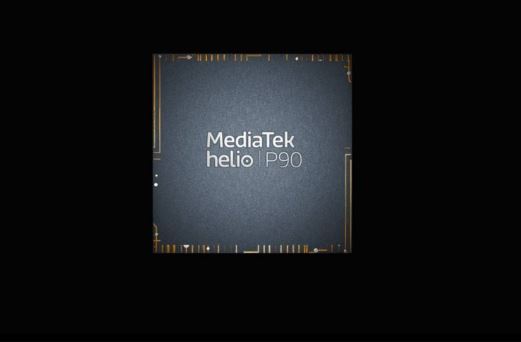
- Release year: 2018
- Technological process: 12 nm
- Architecture : 2 * Cortex-A75 + 6 * Cortex A55
- Video accelerator: PowerVR GM 9446
Geekbench score: 2025/6831 points
MediaTek has long been associated with processor users for cheap and sporadically advanced smartphones. The company tries to create a competitive flagship model, but does not do it very effectively. So MediaTek was not in the top ten of the most powerful chipsets, but took 11th place with Helio P90 released in 2019. The model has an eight-core structure, which, although divided into two and six cores, but in fact they all have high performance. Not surprisingly, the P90 was able to overtake the Snapdragon 710 described below, which has exactly the same cores, but with an emphasis on six cores in energy efficiency.
In general, the new MediaTek is quite interesting – there is support for the fastest RAM up to 8 GB and UFS 2.1 SSDs, as well as competitors, can work with a single 48 megapixel camera or a dual module 24 and 16 megapixel solution. An interesting feature is the support for displays with a resolution of 2520 * 1080 and an aspect ratio of 21: 9. There are three image processing units in the chipset, and the updated AI with support for the AI Fusion function is responsible for ensuring that tasks are distributed between all blocks – this increases speed of data processing. One of the features of this technology is the adjustment of the screen in real time to the selected application – in particular, making video calls and switching from full-screen video to preview, users will not notice delays.
Advantages:
- Eight powerful cores ensure maximum performance.
- Updated AI block to work with photos.
- Support for fast LPDDRX memory up to 8 GB.
- Support for modern cameras up to 48 MP.
- Record video in slow motion at 480 frames per second in HD.
Disadvantages:
- Not the best energy efficiency.
- No photos in 4K.
- Old generation graphic coprocessor.
The most popular smartphones: Blackview BV9800
Qualcomm Snapdragon 710
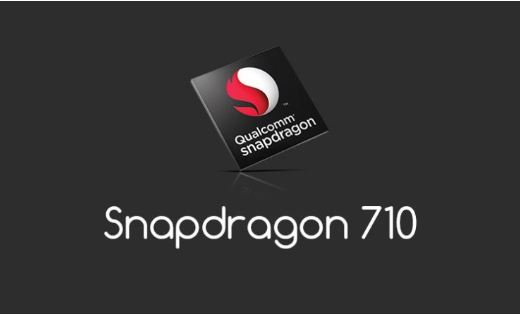
- Release year: 2018
- Technological process: 10 nm
- Architecture : 2 * Cortex-A75 + 6 * Cortex A55
- Video accelerator: Adreno 616
Geekbench score: 1897/5909 points
An intermediate processor that took 12th place in the ranking of the most efficient chipsets. The model became the first in the 700 series. Earlier Qualcomm had a clear division: the 800 series is the flagship level with maximum capabilities, the 600 series is the average level with reduced GPU and CPU cores, and the 400 series is the budget line with minimal possibilities. The 700 series processors, and especially the Snapdragon 710, are all themed systems from the main line, and at the same time quite affordable.
The novelty works on two high-performance cores and six energy-saving ones. Given the new graphics system, the model shows excellent gaming performance and at the same time low energy consumption. In addition, it is able to process photos effectively – reduces noise, supports two dual cameras with a resolution of up to 16 megapixels, HDR and 4K video. I did not forget about the AI company, in this case the manufacturer did not bother and did not insert the cores of the Hexagon 685 engines, i.e. the same as in the flagship Snapdragon 818 from 2018. The output turned out to be a fairly inexpensive chipset, which, if it was worse than flagships, is a little For those who are looking for a smartphone with an average price with excellent performance, energy efficiency and photo processing, the Snapdragon 710 will be a real boon.
Advantages:
- Reasonable price.
- Support for two cameras up to 16 MP.
- Low energy consumption.
- Powerful artificial intelligence for creating photos.
- Supports 4K c 30 fps and HDR.
- Work with biometric sensors.
- Quick Charge 4+ support.
Disadvantages:
- No support for optical camera stabilization.
The most popular smartphones: Samsung Galaxy A8, Meizu 16, Xiaomi Mi8 SE
Final Word
It should be noted that Snapdragon 845 and 660, Kirin 970, Apple A11, Exynos 8895, Helio X30 are not included in our assessment due to the fact that they were all released at the end of 2017 or early 2018. Despite their importance, many readers are familiar with them, and on their basis there are many smartphones. For this reason, we chose new, powerful products that do not require recommendations for the purchase of devices only on their basis. But if you want a smartphone on the freshest and most productive chipset, then the models presented above are the best of its kind.


